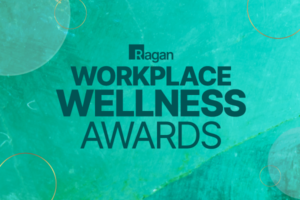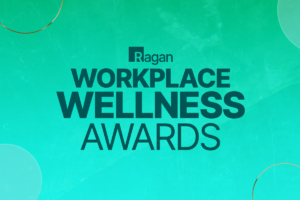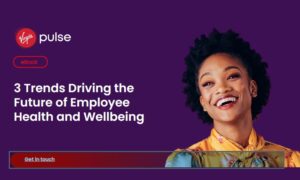Curating the week in wellness Feb. 14-18, 2022
Being parent-friendly can translate to being people-friendly, plus recognition DE&I work needs to occur year-round and more.

Hello, wellness pros!
The Super Bowl took place Sunday, and a 30-second ad cost $6.5 million. Valentine’s Day was Monday, and Americans were projected to spend $23.9 billion on gifts this year. And we are here today with a collection of thought-provoking articles, tips and takeaways for the week.
Please get in touch with any ideas, suggestions or feedback on how we can serve you better or cover topics that are top-of-mind at your organization. Email: kaceyl@ragan.com.
1. Why being an organization that works for parents works for everyone.
There is no question working parents have been especially challenged by the fluctuations of the COVID-19 pandemic. Plus, the call for flexibility is growing , especially from hybrid and remote workers who have experienced further blurring of work and life with kids and pets in the background the past two years. But with this heightened awareness, it can seem like working parents are receiving special treatment.
In a column for Fast Company, Greg Smith, founder and CEO of Thinkific, argues that organizations that implement policies to support parents ultimately benefit everyone at the company. He presents three reasons this is true and worth highlighting:
- Built-in support systems for parents, like paid parental leave and gradual re-entry to work, are also translatable to other personal experiences, liking getting married, loss of a loved one or an illness. Smith writes, “Policies that acknowledge people as humans first ultimately benefit everyone.”
- Progressive policies around work-life balance writ large are an advantage for both retention and recruiting. Specifically, research shows that organizations offering generous, general paid time off see a “significant reduction” in women leaving their jobs.
- Recognition that individuals work best under different conditions, so a focus on inputs—hours worked and rigid schedules—needs to shift to an emphasis on outputs. Smith writes, “Long before the pandemic hit, I reached a point of accepting that work isn’t about how things get done, it’s what gets done.”
2. DE&I work needs to extend beyond Black History Month recognitions.
The New York Times profiled the New Orleans-based diversity, equity and inclusion organization Beloved Community, which takes a unique approach for Black History Month: a paid month off for its employees. This decision serves as an intentional reminder to clients that a DE&I drive must occur throughout the year.
”Our country took 400 years to get here,” says Rhonda Broussard, Beloved Community founder and CEO. “We’re not going to fix things in the next four weeks.”
To that end, it’s important for leadership and teams to be equipped to have conversations about history and culture but also systemic racism and unconscious bias.
In a column for TheMuse, Latesha Byrd, CEO of Prefegta and certified career coach, identifies five things not to say during Black History Month (or ever), plus ways to be more supportive and foster a work environment that uplifts Black employees— during Black History Month and beyond. Here are the takeaways:
- Organizing and attending Black History Month events illustrates support for celebrating the culture and achievements of Black people.
- A key message from Byrd that is also applicable for other recognition months, like Pride or Hispanic Heritage Month: Do not rely on your coworkers to educate you and your team, as that can place an undue burden on them. Rather, foster a culture of learning and sharing using articles, books, podcasts and/or videos and have dialogues around the content.
- Yes, conversations around race, bias and even American history can be uncomfortable. But Byrd writes that this is part of the process: “As an ally, it’s important not to shy away because you feel awkward having to confront your privilege or fear saying ‘the wrong thing.’”
- As a leader, it is important to understand how to best support Black employees’ professional development and mental health, so host focus groups or one-on-one meetings to have those conversations.
- Stop committing microaggressions yourself, but also call out others who use them to truly be a bias disrupter.
3. Natural light improves employee happiness and well-being.
A recent study by Future Workplace, which polled 1,614 North American employees, found access to natural light and views of the outdoors ranks as the No. 1 positive attribute of the workplace environment. Having that access, the study reports, improves overall happiness and well-being for 78% of employee respondents, work satisfaction for 73% and work performance for 70%.
AllWork also points to a research study by Dr. Alan Hedge, Cornell University that found “workers in daylight office environments reported a 51% drop in eyestrain, a 63% drop in headaches and a 56% reduction in drowsiness.”
While windows likely cannot be available in every employees’ workspace—at home or the office—it may be feasible to offer employees the option to work in a window-filled conference room for a change of scenery or encourage heading outside for a walk around the block as a break to soak up some natural light.
4. Crafting the “new normal” for your workplace.
While it may be tempting to hold on to a “wait and see” approach for what’s next for workplaces, Tyrone Smith Jr., global director, head of people analytics and insights with Udemy, suggests time is not on your side. In a column for Human Resources Executive, Smith presents three areas to focus on when developing the “new normal” vision and structure for an organization.
- Clarify identity by determining the organization’s core values and reimagining how those translate and adapt to an employee-first environment.
- Invest in talent by creating an employee experience that incorporates a mental and physical health emphasis, plus education and reskilling opportunities.
- Prepare your managers with coaching and support to lead with empathy and successfully navigate in-person and online communications, which require different skill sets.
5. Headlines around the Great Resignation motivate others to follow suit.
Inspiration comes in many forms, and for some employees it appears hearing and reading about The Great Resignation is a motivating factor in making their own moves.
Insider examined a study by Comparably, which found that among its more than 5,000 respondents “nearly half of the employees surveyed said the Great Resignation is affecting their intentions to stay in their current jobs.” Two other takeaways from the Comparably survey:
- Nearly 60% of both the 41-45 and 46-50 age groups identify with Great Resignation and its impacts on their intentions to stay.
- The longer a respondent has been with a company, the more likely the Great Resignation is affecting their intentions to remain there.
Obviously, all the Great Resignation coverage is not the only reason people are voluntarily making moves, but this study’s results do serve as a reminder that it is crucial to check in with employees of any age and tenure about what they are wanting and needing from their jobs.
COMMENT
Ragan.com Daily Headlines
RECOMMENDED READING
Tags: Black History Month, DE&I, employee experience, great resignation, office environment, values, working parents






